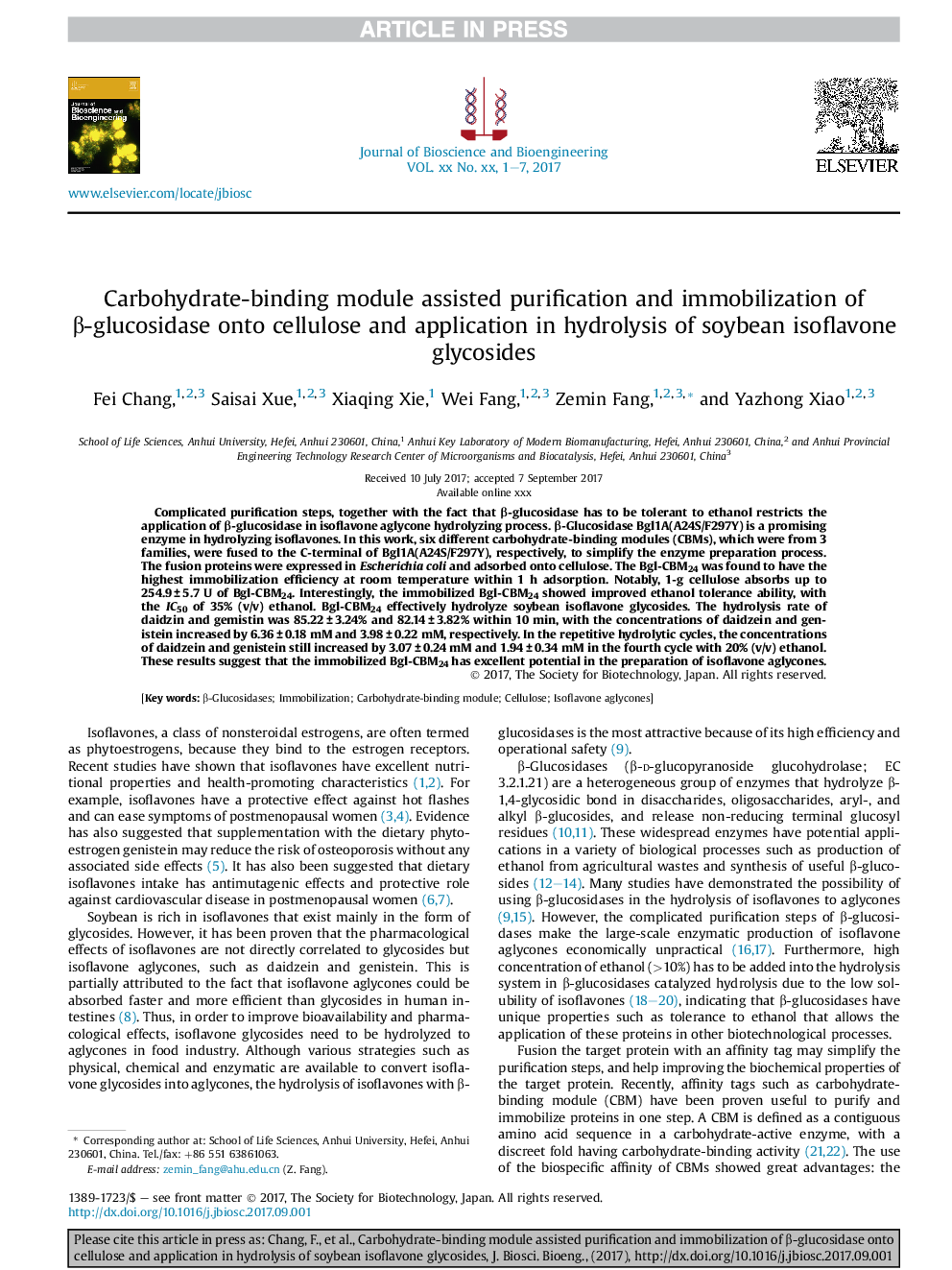| Article ID | Journal | Published Year | Pages | File Type |
|---|---|---|---|---|
| 6489979 | Journal of Bioscience and Bioengineering | 2018 | 7 Pages |
Abstract
Complicated purification steps, together with the fact that β-glucosidase has to be tolerant to ethanol restricts the application of β-glucosidase in isoflavone aglycone hydrolyzing process. β-Glucosidase Bgl1A(A24S/F297Y) is a promising enzyme in hydrolyzing isoflavones. In this work, six different carbohydrate-binding modules (CBMs), which were from 3 families, were fused to the C-terminal of Bgl1A(A24S/F297Y), respectively, to simplify the enzyme preparation process. The fusion proteins were expressed in Escherichia coli and adsorbed onto cellulose. The Bgl-CBM24 was found to have the highest immobilization efficiency at room temperature within 1 h adsorption. Notably, 1-g cellulose absorbs up to 254.9 ± 5.7 U of Bgl-CBM24. Interestingly, the immobilized Bgl-CBM24 showed improved ethanol tolerance ability, with the IC50 of 35% (v/v) ethanol. Bgl-CBM24 effectively hydrolyze soybean isoflavone glycosides. The hydrolysis rate of daidzin and gemistin was 85.22 ± 3.24% and 82.14 ± 3.82% within 10 min, with the concentrations of daidzein and genistein increased by 6.36 ± 0.18 mM and 3.98 ± 0.22 mM, respectively. In the repetitive hydrolytic cycles, the concentrations of daidzein and genistein still increased by 3.07 ± 0.24 mM and 1.94 ± 0.34 mM in the fourth cycle with 20% (v/v) ethanol. These results suggest that the immobilized Bgl-CBM24 has excellent potential in the preparation of isoflavone aglycones.
Related Topics
Physical Sciences and Engineering
Chemical Engineering
Bioengineering
Authors
Fei Chang, Saisai Xue, Xiaqing Xie, Wei Fang, Zemin Fang, Yazhong Xiao,
